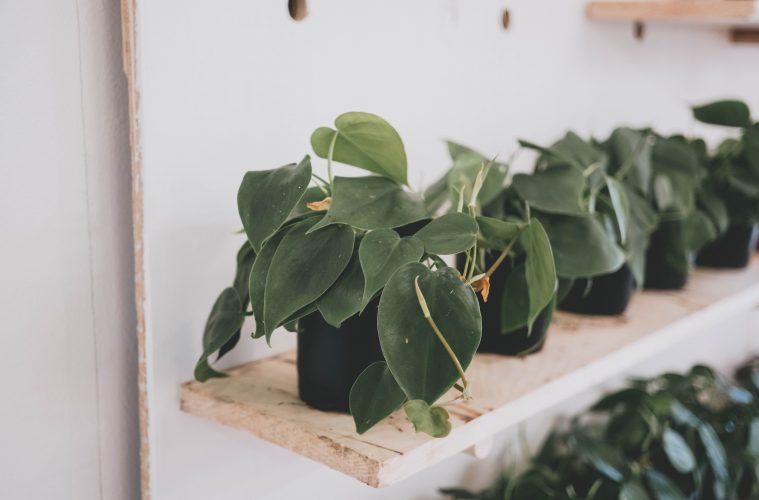Philodendrons are some of the most common houseplants around, thanks to their love of tropical climates and by extension, indoor conditions. Among the many Philodendron species, Philodendron hederaceum (sometimes known as Philodendron scandens) is undoubtedly the most popular.
Most houseplant lovers will recognize the classic heart shaped leaves and vining stems anywhere, giving them the common name Heartleaf Philodendron. They are also beloved for their ease-of-care, giving no trouble to the blackest of thumbs.
Follow this easy guide to keep your Philodendron hederaceum happy and thriving.
Light Requirements
Philodendron hederaceum is one of the few houseplants known to tolerate lower lighting conditions indoors. While this is true of some types, they will grow best when given bright indirect sunlight. Direct light can burn the foliage, and no light for long periods will stunt growth and ultimately kill the plant.
If your Philodendron is variegated, as many types are, the right lighting conditions are more important. Heavily variegated varieties will begin to lose their variegation in low light as they produce more chlorophyll. Give them as much bright indirect light as possible to maintain their colour.
Watering
Heartleaf Philodendrons are not heavy water users. As they are prone to root rot, they prefer their soil to dry out slightly before the next watering rather than remaining consistently moist. Many gardeners choose to water on a regular schedule, but this can quickly lead to over or underwatering when indoor conditions change day to day. Instead, test the soil with your finger every few days and water again when the top layer of soil is completely dry. This will stop you from overwatering while maintaining enough moisture to keep the plant happy.
Temperature
These tropical plants prefer warm temperatures and high humidity to match the conditions in their native habitats. Moderate temperatures of 15C to 28C indoors are preferred, but they can adapt to some variation. Ensure they are not left in front of cold windows or drafts in winter to prevent cold damage to the cells of the plant.
To replicate their tropical rainforest homes, keep humidity levels around 60% for the best results. They can manage in humidity as low as 40%, but will begin to dry out when humidity dips below that. Increase the humidity by using a humidifier or moving the plant to a room with consistently high humidity, such as a bathroom.
Fertilizer
Although they are not heavy feeders, these plants will appreciate additional nutrients after a couple of months in the same pot. Fertilize in spring and summer every 4-6 weeks with a liquid houseplant fertilizer. Variegated varieties grow slower and only need to be fertilized once every two months.
Maintenance
Philodendron hederaceum looks wonderful in a hanging basket, but will grow far quicker when given a support to climb. Train the vines up a moss pole for quick growth and a stunning houseplant feature.
These quick-growing plants will need repotting every 2 years or so, depending on the conditions they are in. Repot into a light and airy houseplant potting mix in a pot one to two sizes up to watch your plant continue to grow and thrive.
Author: Madison Moulton
SEE MORE:


